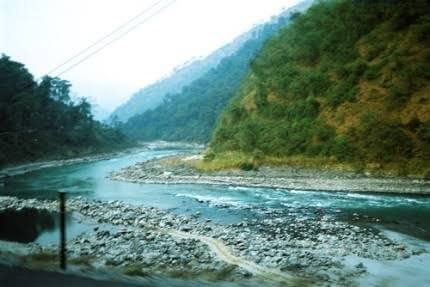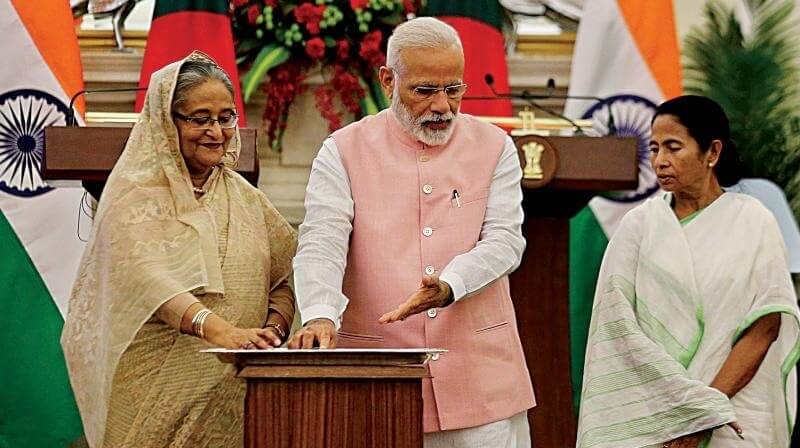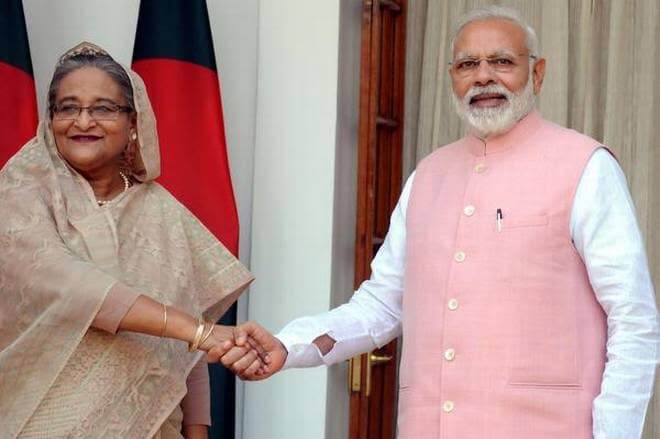Transboundary waters form a crucial determining factor in understanding bilateral ties between nations. They become the bridge between countries in economic as well as cultural aspects, and could either intensify relations or become a bone of contention, sometimes leading to serious conflicts if not dealt with appropriately. Bangladesh and India have been in a similar situation which began decades ago and still remains unresolved. The neighbouring countries share four important rivers: Teesta, Ganga, Brahmaputra and Meghna. Among these, Teesta is the most significant one as it covers about 14% of the cropped area of Bangladesh, and approximately 7.3% of the country depends on the river for livelihood. The river, which rises in Sikkim and flows south via the east of Darjeeling (West Bengal), crosses the Rangpur region of Bangladesh to join the Jamuna river in West Bengal’s Mekhliganj, forming the border between the two countries. The conflict arose from an imbalanced and inappropriate quantity of sharing water.

Teesta River. Source: Newsclick
While Bangladesh wants 50% of the supply, especially during the months of December to March as almost 90% of the population is dependent on the river, India claims 55% of it. This issue led to the formation of the Teesta River Agreement in 1996 under Indian Prime Minister Deve Gowda and Bangladeshi Prime Minister Sheikh Hasina. The deal mentions that Bangladesh would receive 48% of the waters, and this deal was formerly supposed to be inked on September 6, 2011. However, it still remains unsigned due to a conflict in ideologies between the centre and the state of West Bengal, whose Chief Minister Mamata Banerjee repeatedly objected to this. Furthermore, in order to cater to the needs of the people living on the banks of the river, the countries have built huge irrigation projects which have immensely increased the demand for water supply. India being the upper riparian country has an advantage over this situation. The storage of water for irrigation and other purposes here has drastically reduced the amount of water flowing to Bangladesh.
With a rapid increase in population, urbanization and food consumption in South Asia, there has been a sharp increase in the continent’s water demand. The unequal proportion of hosting over 21% of the world population but only a little over 8.3% of the world’s water resources has created huge problems in the region. As the earth faces a severe water crisis, the insecurity is only increasing with time.
Where it all Began
The Teesta dispute goes way back to 1947, when the Boundary Commission produced a report to demarcate the boundary between West Bengal (India) and East Pakistan (formerly Pakistan then Bangladesh from 1971). The Muslim League demanded that the territories of Darjeeling and Jalpaiguri areas be a part of the Pakistani state, considering that they are the catchment areas of the Teesta river system. The Indian National Congress, however, did not agree to this as this area was home to a large non-Muslim majority. While the League had plans to start hydro projects here to cater to the needs of the Muslim majority areas of East Bengal, the INC claimed India’s territory of both these areas. Ultimately, being non-Muslim majority areas, a large part of the Teesta’s catchment area went to India’s territory.
The talks for water sharing were not as explicit in the public sphere until the formation of Bangladesh in 1971, when its people became vocal about the issue. This eventually led to the establishment of the India-Bangladesh Joint River Commission in 1972. Article 253 of the Indian Constitution empowers the Indian government to “enter into any transboundary river water-related treaty with a riparian state”. However, it should be validated from both ends (centre and state). They have to take all accounts into consideration before entering any such agreement. Against this backdrop, it is obligatory for West Bengal government to participate in settlement discussions regarding the Teesta. Mamata Banerjee remains opposed to the agreement as the increase in the flow of water to Bangladesh would have the potential to severely affect five districts of North Bengal — Cooch Behar, Jalpaiguri, South and North Dinajpur, Darjeeling — which are the poorest blocks in her state. While some leaders have supported her, there are few leaders from the opposition, especially the Communist Party of India (Marxist) who accuse her of being the hurdle to the normalcy of Indo-Bangladesh relations. They regard Banerjee as being a puppet in the hands of forces who do not want to normalise these relations. The Hindu even went on to call her a ‘spoiler’ in this regard.

Source: Deccan Chronicle
The impasse due to the inability of the governments involved to sign a deal has caused a grievous collateral damage and disturbed the lives of people living on the banks of the catchment areas. Construction of dams like the Teesta Barrage and power plants are putting tremendous pressure on the natural environment and ecosystem of the Teesta basin areas, which has led to the displacement of many families living alongside river basins. The rise in demand of water has resulted in the river going completely waterless during the dry season in the last decade. To add to the complexity, Indian dams release excess water during monsoon, causing heavy floods and disruption of livelihoods in Bangladesh.
What Next?
India lies at the axis of transboundary river politics, be it with Nepal, Pakistan or Bangladesh and it has water issues with all of them. Solving the Teesta dispute would help India lose its tag of a hegemonic ‘Big Brother’ and be looked upon as the country who safeguards not only its own interests, but those of the region as a whole.
Coming to the Teesta River Agreement, there are several flaws in the present deal. Nowhere does it mention the management of groundwater aquifers or the socio-economic development of riparian communities. It is time for the countries to sit together and revisit the draft. Banerjee should be equally involved in the discussion, owing to the fact that water is a state subject in India. It is about time the Joint River Commission, which has been shelved since 2011 due to difference in interests regarding the agreement, be revived and put back into action.
India has many sites which are favorable for the construction of reservoirs. Since Bangladesh faces water crisis during the lean season, India could take the initiative of constructing aquifers to store water for any such state of affairs. As for Bangladesh, it could try to mix the regular crops with those requiring less water in order to balance the water demand in the dry season, . and could store the excess water flowing during monsoon to meet the needs during the same.
This is not the first time that India and Bangladesh have had an issue. There have been other disputes related to land boundary or maritime delineation. However, they have always addressed the issues and worked to resolve them, no matter the amount of time taken. The Teesta Agreement remains a paramount issue of contention and a major hindrance to the enhancement of ties between them. However, the issue has not been given the due importance that it requires. Even though the leaders of the countries have met several times on various occasions, the issue has never been put to the limelight. The ecological balance and livelihood of the Teesta basin has been severely affected due to the exploitation of water and the subsequent effects of climate change. Water availability per capita in the region has reduced by 70% since 1950. Despite all this, no concrete action has been taken so far. It is about time both governments realise the importance of the matter as it involves diverse interests and necessities on both sides.
How can they achieve this? The matter should be dealt with mutual understanding, diplomacy and coordination with the involvement and consent of all the parties concerned. In a world of growing interdependence, India and Bangladesh must agree on a deal which would be substantially beneficial for all parties.
There are various advantages for both the countries if the deal is finalized. For New Delhi, its preeminence in the region could be firmly established. For Dhaka, it would result in a political gain for Hasina, lobstering her stance as a leader prioritising the interests of her people. This would be a huge blow to the Bangladesh National Party who has called out on her as being too friendly or bring subjugated under the pressure of India.
India and Bangladesh share a time-tested friendship. With the assurance from Modi that they share cordial bilateral relations, it is time to “walk the talk”. As the leaders of both the countries plan to meet on the sidelines of the India Economic Summit to be held in Delhi this week, it is expected that there would be some progress on the Teesta issue. At the 74th United Nations General Assembly held last month, Modi assured Hasina not to worry about the water dispute and that it would be solved at the earliest. The current meet would be the perfect opportunity to put it into action. With 53 other water disputes and an issue on National Register of Citizens yet to be solved between the two countries, the two world leaders should be confident to solve other issues as well, thus adding a fresh page to their age-old friendship. We wait until the details of the numerous agreements signed are revealed, and hope that this dispute finds some recourse within them.
References:
Teesta Barrage Project. (2016). International Journal of Science and Research (IJSR), 5(5), 2027—2032. doi: 10.21275/v5i5.nov163797
Lepcha, T. (2017). Hydropower projects on the Teesta River. Water Conflicts in Northeast India, 242—261. doi: 10.4324/9781315168432-16
Cover image: The Hindu

